Newton’s first law, also known as the law of inertia, states that an object will maintain its state of rest or uniform motion in a straight line unless acted upon by an external force. In simpler terms, if there are no unbalanced forces acting on an object, it will either remain stationary or continue moving with a constant velocity.
Examples
Football

Consider a stationary football resting on the ground. In accordance with Newton’s first law of motion, the football will remain at rest unless acted upon by an unbalanced force. In other words, the football will not start moving by itself; it requires an external force such as a kick or a push to set it in motion.
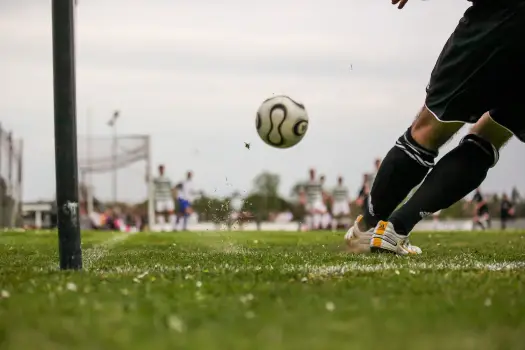
When a football is thrown or kicked, an external force is applied to it, causing it to move from a state of rest. This exemplifies Newton’s first law of motion, which states that an object at rest will remain at rest unless acted upon by an external force. Similarly, a football in motion will continue moving unless acted upon by an unbalanced force, such as another player intercepting or stopping it. In both cases, the football’s motion is influenced by the presence of external forces, in accordance with Newton’s first law.
Car

A stationary car standing on the road will not start on its own unless someone starts it with a key or maybe an unbalanced force (in the form of someone’s push) acts on it. This is because of Newton’s first law, which states that an object at rest will continue to remain at rest unless an external force is applied to it. In the case of the car, it will remain stationary until an external force, such as starting the engine or applying a pushing force, initiates its motion.
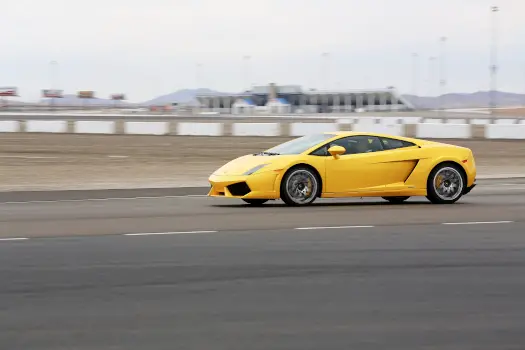
While driving a car, the car is in motion, and according to Newton’s first law, it will continue to remain in motion unless acted upon by an external force. This law states that objects in motion tend to stay in motion. Therefore, the moving car will not come to a stop on its own; it requires an unbalanced force, such as applying the brakes, to bring it to a stop.
Puck

Consider a stationary hockey puck resting on the ice. According to Newton’s first law of motion, the puck will remain at rest until acted upon by an unbalanced force. In other words, the puck will not start moving on its own; it requires an external force. For example, when a hockey player strikes the puck with their stick, the unbalanced force propels the puck and initiates its motion.

When a stationary hockey puck is set in motion, it will not naturally come to a stop. It requires an external force, such as the impact from another player’s hockey stick or the friction with the ice, to bring it to a halt. This observation aligns with Newton’s first law, which states that an object in motion will continue moving until acted upon by an unbalanced force.
Bicycle

When a bicycle is stationary and parked in a garden, it remains at rest until someone starts riding it. Newton’s first law states that objects maintain their state of rest or motion unless acted upon by an unbalanced force. In the case of a bicycle, the unbalanced force is applied when a person exerts force on the pedals with their leg, initiating the bicycle’s movement. In other words, a stationary bicycle requires an external force, such as the rider’s leg pushing on the pedals, to break its state of rest and set it in motion.

Newton’s first law states that an object in motion will continue moving with a constant velocity unless an external force acts upon it. This principle applies to a moving bicycle as well. The bicycle will not naturally come to a stop on its own. Instead, an unbalanced force, such as the application of brakes or the force of friction, is necessary to bring it to a halt. In other words, the bicycle’s inertia will keep it moving until an external force is exerted to change its state of motion.
Billiard ball
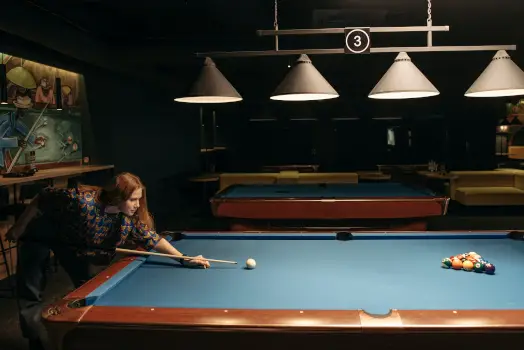
A billiard ball at rest on a pool table will remain stationary until an external force acts upon it. According to Newton’s first law, the ball will not start moving by itself. Instead, it requires an external force, such as being struck by a pool cue, to initiate its motion. The inertia of the billiard ball keeps it at rest until an unbalanced force is applied to change its state of motion.
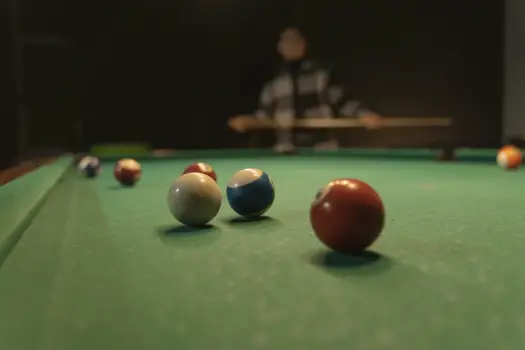
When a billiard ball is in motion after being struck with a cue stick, it will continue moving until acted upon by an external force. This is in accordance with Newton’s first law of motion. The ball will not spontaneously come to a stop by itself. It requires an unbalanced force, such as colliding with another ball or encountering the edge of the table, to halt its motion.
Bowling ball
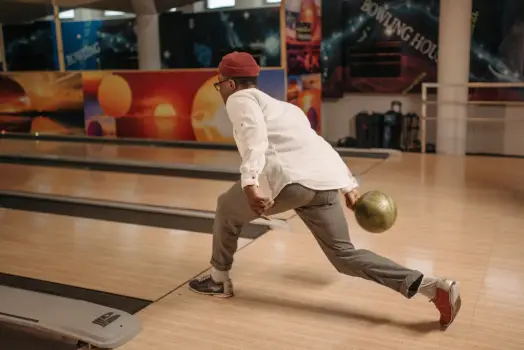
According to Newton’s first law of motion, objects will remain at rest unless acted upon by an unbalanced force. This principle applies to a stationary bowling ball as well. The bowling ball will not spontaneously move towards the pins; it requires an external force, such as being thrown by a person, to set it in motion.
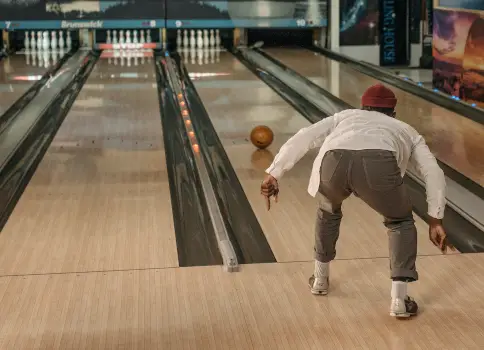
According to Newton’s first law of motion, a moving object will continue in its state of motion unless acted upon by an external force. In the case of a bowling ball in motion, it will continue rolling unless an external force, such as friction or the collision with a bowling pin, acts on it to bring it to a stop. The presence of friction between the ball and the bowling lane, or the impact of the ball hitting the pin, can both serve as unbalanced forces that halt the ball’s motion.
Tomato ketchup

The behavior of tomato ketchup in a bottle is a good example of Newton’s first law of motion. When the ketchup is at rest inside the bottle, it tends to remain in that state unless acted upon by an external force. In this case, the force that enables the ketchup to flow out of the bottle is typically gravity, which pulls the ketchup downwards. Alternatively, applying an external force, such as hitting the backside of the bottle, can also cause the ketchup to overcome its inertia and come out. This demonstrates that an unbalanced force is necessary to initiate the motion of the ketchup and overcome its tendency to stay at rest.
Scooter

A stationary scooter parked on the road provides an example that illustrates Newton’s first law. According to this law, objects require an external force to change their state of motion. In the case of a stationary scooter, it will remain at rest until someone starts and rides it. When the scooter is started, the engine applies an unbalanced force that initiates its motion from a stationary position.
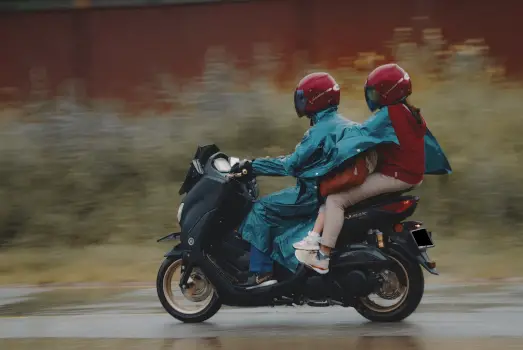
When riding a scooter, it is noticeable that if the throttle is released without applying the brakes, the scooter will continue moving forward. This observation aligns with Newton’s first law of motion, which states that an object in motion will remain in motion unless acted upon by an external force. In the case of the scooter, the force of friction or the application of brakes serves as the unbalanced force that gradually slows down the scooter’s speed and eventually brings it to a stop.
Astronaut
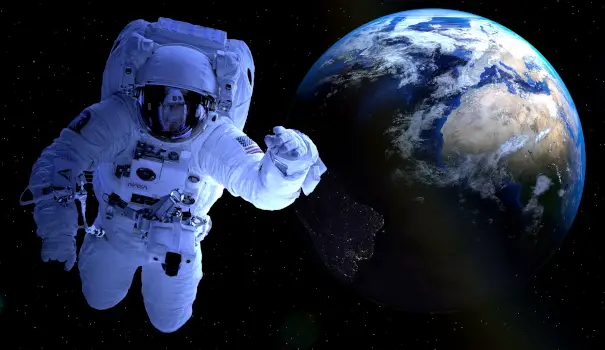
In accordance with Newton’s first law of motion, objects will continue to move unless acted upon by an external force. This principle also applies to astronauts in outer space. Due to the absence of gravity, astronauts experience perpetual floating as there is no force to bring them to a stop. As a result, unless they encounter an external object or force that interacts with them, they will continue to float freely without any resistance to bring them to rest.
Asteroid

In the vast expanse of outer space, when an asteroid floats freely, it follows the principles of Newton’s first law. As per this law, the asteroid will persist in its motion unless an external force disrupts its trajectory. In the absence of any unbalanced forces, such as collisions with other celestial bodies or gravitational interactions with planets, the asteroid will continue its eternal journey through the depths of space.
More topics
- Frame of reference
- Newton’s first law
- Newton’s second law
- Newton’s third law
External links
- Newton’s laws of motion | Definition, Examples, & History – Britannica
- Newton’s first law – Examples – Mammoth Memory
- Newton’s First Law of Motion – The Physics Classroom
- What is Newton’s first law? (article) – Khan Academy
- Newton’s Laws of Motion – NASA (.gov)
- Newton’s First Law of Motion | Overview & Examples – Study.com
- Newton’s First Law of Motion : Definition, Formulas, & Examples – Turito
- Newton’s Laws – HyperPhysics Concepts
- Newton’s laws of motion – Wikipedia
- 5.2 Newton’s First Law – University Physics Volume 1 – OpenStax
- What Is Newton’s First Law? – Lesson – Teach Engineering
- Simple Science Experiments: Newton’s First Law of Motion – MetroFamily Magazine
- Motion and Forces: Newton’s First Law of Motion – Perkins School For The Blind
- Newton’s First Law: Definition & Examples, Equation – Vaia
- 5.2 Newton’s First Law – General Physics Using Calculus I – UCF Pressbooks
- Newton’s Laws of Motion with Examples – Smore Science Education
- Newton’s Laws: Explanation, Review, and Examples – Albert
- Mistranslation of Newton’s First Law Discovered after Nearly 300 Years – Scientific American
- Newton’s First Law – Physics – Socratic
- Newton’s First Law ( Read ) | Physics – CK-12 Foundation
- Newton’s First Law: Statement, Examples, and Equation – Science Facts
- Newton’s First Law of Motion | COSMOS – Swinburne University of Technology
- What are some examples and applications of Newton’s first law? – Quora
- Newton’s First Law Of Motion – PhysicsTutorials.org
- Easy Physics Project on Newton’s First Law – Education – Seattle PI
- Newton’s Law of Inertia – Texas Gateway
Deep
Learnool.com was founded by Deep Rana, who is a mechanical engineer by profession and a blogger by passion. He has a good conceptual knowledge on different educational topics and he provides the same on this website. He loves to learn something new everyday and believes that the best utilization of free time is developing a new skill.
